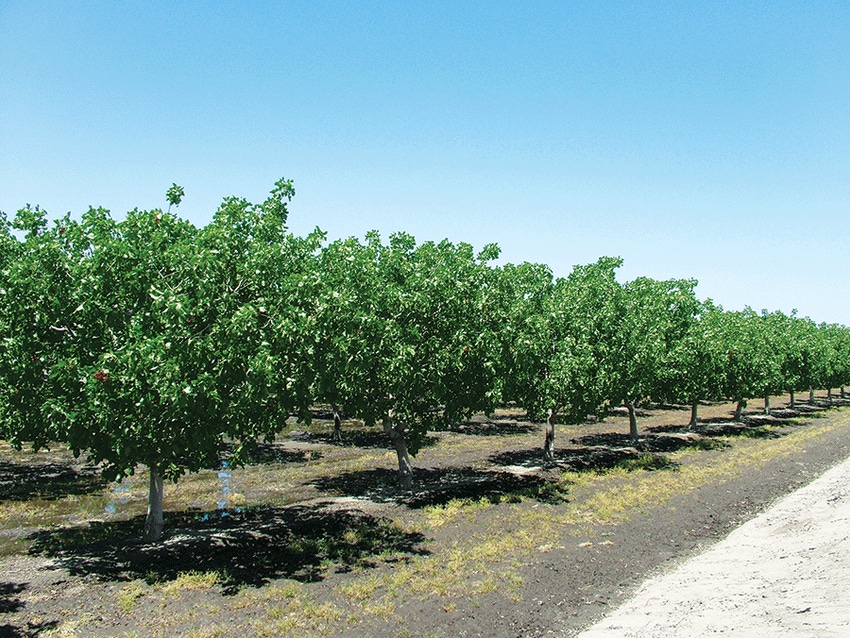
Dr. Bob Klein, manager of the California Pistachio Research Board at Fresno, recently compiled some truths and falsehoods about growing and harvesting.
Why are pistachios more expensive than other tree nuts?
“I will need to compare and contrast the other commercially produced nuts (not harvested from the wild, like Brazil nuts), particularly almonds and walnuts. Pistachios have an extended juvenile period before they begin bearing. We generally say about six years before the first crop, but it is closer to 10 years before the value of the crop begins to exceed the annual costs of production.
“So, with pistachios you have about 10 years before cash flow is positive and you can start paying off the accumulated debt from planting and training. Almonds are much shorter for cash flow, somewhere in the three-year to four-year range. Walnuts are probably closer to pistachios”
Here is another reason:
“Harvest of almonds and walnuts is simpler than pistachios. Almonds and walnuts are shaken from the tree onto the ground and swept up. Machinery is relatively inexpensive, and the time constraints of optimum harvest are a bit easier than for pistachios. Pistachios are harvested fresh and the harvest machinery is very expensive. Pistachio harvest time constraints are very tight, and multiple harvest machines are needed, so harvesting is generally contracted to outside companies.
“As a fresh crop, pistachios must be hulled and dried to be a stable commodity, and this must be done within 24 hours of removal from the tree. The machinery used for this is expensive and has only one use — hulling and drying pistachios during the four-week to six-week harvest period. You can’t stockpile pistachios, which can be done with almonds, and thus spread the processing out over time. Walnuts have a bit more involved processing than almonds, but not as much as pistachios.
“So, establishment costs are higher, harvest is more expensive, and processing more costly and involved. All of that leads to higher value/prices.”
Another reason for higher price is location.
“There are limited locations around the world where pistachios and almonds can be grown. Walnuts are a bit broader range, but pistachios and almonds need Mediterranean climates, and pistachios need winter chill. There is virtually no place in Africa where pistachios can be grown, production of almonds in Spain far exceeds pistachio production anyplace in Europe, and pistachios are limited pretty much to the U.S. (98 percent California), Turkey, and then Iran.
Why were pistachio nuts dyed red in the past?
“When pistachios are not processed promptly after shaking from the tree, chemicals in the nut hull can stain the shell. The stains are not visually appealing, so pistachios were dyed to hide the staining.
“When California began growing pistachios in the mid-1970s, removing the hull promptly became a standard practice. This eliminated the shell staining, and allowed the light tan shell to actually show.”
Are pistachios really nuts, rather than seeds?
Outside of botanical purists, I am not sure anyone cares. Botanically, almonds, walnuts, and pistachios are seeds, while hazelnuts and pecans are true nuts. And technically, we should be calling almonds, etc., drupes. But, I think that from culinary and health considerations, the tree nut classification makes sense.”
Another fable about pistachios:
“In the history of pistachios is royalty, perseverance, and pride. Pistachios date back to the holy lands of the Middle East, where they grew wild in high desert regions. Legend has it that lovers met beneath the trees to hear the pistachios crack open on moonlit nights — a promise of good fortune.
About the Author(s)
You May Also Like




